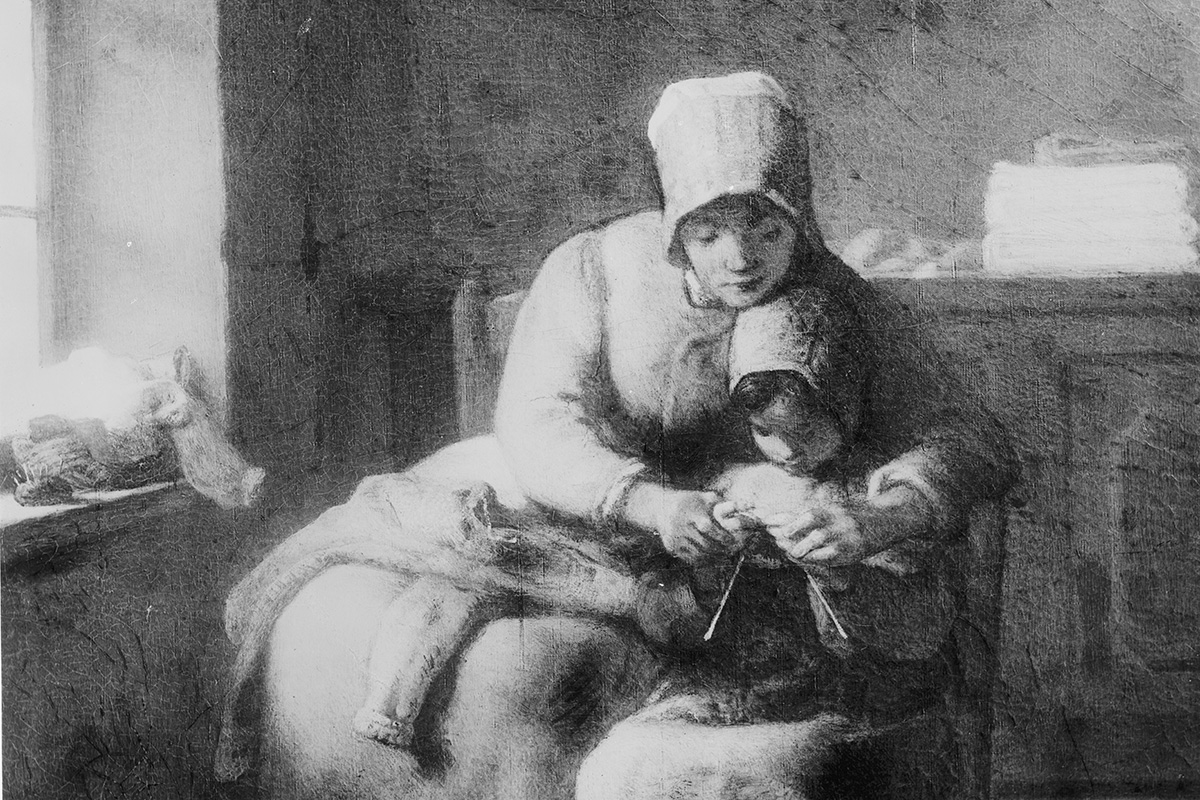Unique knitting styles and stories can be found all over the world, from Europe to South America. These traditions often have long histories and may contain symbolic motifs or patterns. No matter what form these knits take, they help those creating them feel connected to their communities and their history, representing a source of pride. Through their practical uses, they also give insight to the links between tradition and history.
An expert in both the tradition and the history, Norman Kennedy received a National Heritage Fellowship from the National Endowment for the Arts in 2003 for his mastery of Scottish weaving, singing, and storytelling. Born in 1933, Kennedy has spent much of his life immersed in traditional hand weaving and folk practices, and he has taught courses in knitting and weaving around the world. Hailing from Aberdeen, a city on Scotland’s northeast coast, he has a thick accent and a seemingly endless memory, as well as an encyclopedic knowledge of all things knitting, weaving, and spinning.
Kennedy’s knitting knowledge dates back to his childhood—he was surrounded by knitters growing up in his community.
“They just never sat down without knitting,” he said. “And if they were standing speaking, they were knitting. Their hands were never idle.”

In this environment, he learned not so much by being taught as by simply picking it up. For the knitters of his generation and those preceding from Scotland and Ireland, Kennedy said knitting was “in their genes.” They didn’t need written patterns. They learned by watching those around them. He boasted that his grandmother could knit a sock in one evening, and he in two evenings if he really hurried.
“That’s common in cultures where people are knitting out of absolute necessity,” he explained. “You couldn’t buy socks during the wartime. If they did sell them, they were very poor quality, so people just knitted.”
For centuries in Kennedy’s community and around the world, knitting was far more than a hobby or a pastime as it’s often seen now. It was an important practical skill and a potential source of income. Most women knew how to knit, he explained, and it would have been considered an essential part of a girl’s education. In fact, growing up he didn’t know any women who couldn’t knit. And it wasn’t limited to women; many men, especially sailors, were also highly competent knitters in his community.

The items they knitted were directly related to their physical location and history. Aberdeen was a port city, and the men in Kennedy’s family were seafarers. For centuries, Scottish artisans knitted long hose, which were traded to Dutch merchants in exchange for salt herring and potatoes—staples in the regional diet as a result. Hose, long johns, and sweaters, or ganseys, as Kennedy calls them, were common knits born of necessity in Aberdeen and the surrounding areas, keeping sailors and fishermen warm on their open boats.
It was a matter of survival to have these articles in the bitter cold. During World War II, the efforts intensified to help support the United Kingdom’s armed forces.
“Yarn was very hard to come by, because you had to get clothing coupons for it,” Kennedy continued. “But they were giving navy blue yarn to knit things for the men in the Royal Navy, they were giving light blue to knit for the Royal Air Force, and then they were giving khaki wool for the soldiers. Everybody was involved in the war effort.”
The desire to create something by hand draws new knitters to seek out instruction from people like Kennedy. Even if learning to knit is no longer a matter of immediate survival, he still holds students to high standards. Kennedy takes pride in his knowledge and his work, and he tries to instill the same pride and knowledge in his students, which in turn will help to keep traditional crafts alive for future generations.

“I knitted because it gave me satisfaction,” he said. “Couldn’t say I particularly liked it, but I did it, and I was proud.”
Traditional crafts play an important role in telling the stories of a culture or community, representing their rituals and regional histories. As a storyteller and a knitter, Kennedy values and exercises his good memory. Memory strengthens his now arthritic fingers, knitting stitch after stitch and carrying forward the traditions of times long past. Through artists like him, we can understand and honor where traditional arts come from and why they came into being.
Julia Berley is an intern at the Center for Folklife and Cultural Heritage. She is a junior at Emory College of Emory University, double majoring in history and psychology.


